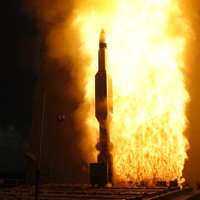Earlier this month, the Brazilian navy successfully tested an indigenously designed and manufactured anti-ship missile. In an email interview, Dinshaw Mistry, an associate professor of political science at the University of Cincinnati, reviewed the state of the global missile industry.
WPR: Which countries currently have an indigenous missile capability, and in what ranges, and which countries are currently seeking to develop this capability?
Dinshaw Mistry: About a dozen countries currently build ballistic missiles with varying ranges. The United States, Russia, France and China have built long-range missiles that serve as nuclear weapon delivery systems. China, Israel, India and Pakistan have built medium-range missiles, mostly for use as nuclear weapon delivery systems, as well as short-range missiles that may be armed with either nuclear or conventional warheads. North Korea and Iran have built medium-range and short-range missiles that are conventionally armed. South Korea, Egypt and Syria have also built short-range conventionally armed missiles. In addition, Japan, India and Ukraine have built space launch rockets that are as powerful as long-range missiles; North Korea’s three flight tests of a long-range rocket have failed; and Brazil has unsuccessfully tested a medium-range space launcher.

